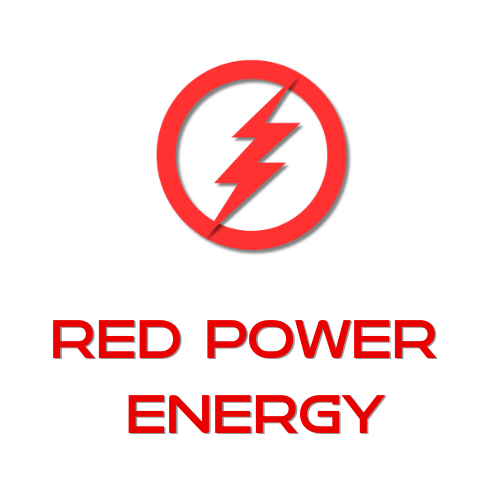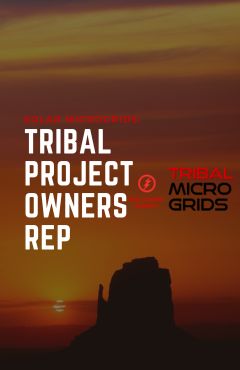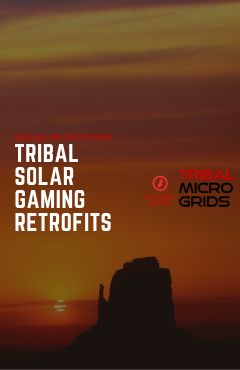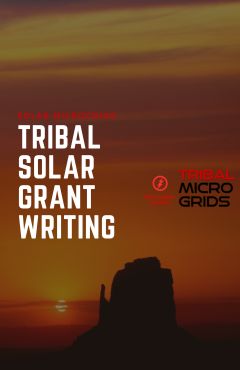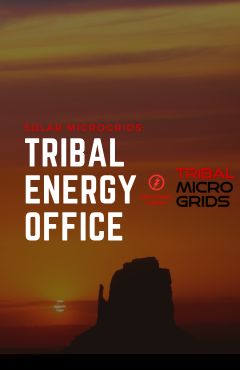Bring Solar Power to Your Tribal Homes with Our Residential Packages
Introduction
The power of solar energy for tribal communities
In recent years, the adoption of solar energy has been gaining momentum across the United States, and tribal communities are no exception to this trend. As stewards of the land with a deep connection to nature, many Native American tribes are embracing solar power as a clean, renewable energy source that aligns with their values and traditions. The potential for solar energy to transform tribal communities is immense, offering a path towards energy independence, economic development, and environmental stewardship.
Solar power represents more than just a technological advancement; it’s an opportunity for tribal nations to take control of their energy future. By harnessing the power of the sun, tribes can reduce their reliance on external energy sources, lower electricity costs, and create jobs within their communities. This shift towards renewable energy also supports the preservation of tribal lands and resources, ensuring a sustainable future for generations to come.
The adoption of solar energy in tribal communities is not just a matter of installing panels on rooftops; it’s about empowering nations to become self-sufficient and resilient. As we delve deeper into the world of solar power for tribal homes, we’ll explore how this technology can be tailored to meet the unique needs and challenges faced by Native American communities.
2. Understanding Solar Energy
- 1. Benefits of tribal residential solar packages
- 2. Understanding Solar Energy
- 3. Types of solar panel systems
- 4. Solar Power for Tribal Communities
- 5. Opportunities: The Keys to Solar Tribal Housing
- 6. Energy sovereignty and Native American self-sufficiency
- 7. NTUA
- 8. Red Power Energy’s Residential Solar Packages
- 9. Customization of Energy Programs for Tribal Needs
- 10. Components of a Residential Solar System
- 11. Tribal Housing Solar Installation Process
- 12. Tribal Housing Solar System Design
- 13. Tribal Housing Solar Programs Permitting and Approvals
- 14. Installation and Connection of Tribal Housing Solar Plans
- 15. Financing Options for Tribal Solar Projects
- 16. Department of Energy Tribal Energy Program Grants:
- 17. Tribal Housing Solar Loan Options
- 18. Environmental Impact Of Tribal Housing And Solar
- 19. Preserving tribal lands
- 20. Economic Benefits of Tribal Housing Solar Programs
- 21. Quantifying and Communicating Savings:
- 22. Job creation and workforce development
- 23. Measuring and Maximizing Impact: Workforce Development
- 24. Maintenance and Longevity of Tribal Housing Solar
- 25. Community Engagement in Maintenance:
- 26. System lifespan: The Value Of Tribal Residential Solar
- 27. Future of Solar in Tribal Communities
- 28. Expanding Solar Capacity: Tribal Housing and Beyond
- 29. Comprehensive Planning:Victory Loves Preparation
- 30. Adaptive Management:Getting The Most Value From Your Investment
- 31. Comprehensive Assessment:
- 32. Community Engagement
- 33. Comprehensive Solar Technician Training:
- 34. Needs Assessment:
- 35. FAQ
How solar power works
To fully appreciate the potential of solar energy for tribal communities, it’s essential to understand the basic principles of how solar power works. At its core, solar power is the conversion of sunlight into electricity, a process that’s both elegant in its simplicity and revolutionary in its implications for energy production.
The heart of a solar power system is the photovoltaic (PV) cell, commonly known as a solar cell. These cells are typically made from silicon, a semiconductor material that exhibits a unique property called the photovoltaic effect. When sunlight strikes the surface of a PV cell, it causes electrons within the silicon to become energized and move, creating an electric current.
Multiple PV cells are connected together to form a solar panel, and multiple panels are combined to create a solar array. The size of the array depends on the energy needs of the home or community it’s serving. As sunlight hits the solar panels throughout the day, they generate direct current (DC) electricity.
However, most homes and appliances use alternating current (AC) electricity. This is where another crucial component of the solar power system comes into play: the inverter. The inverter converts the DC electricity produced by the solar panels into usable AC electricity, which can then power homes and businesses.
One of the beauties of solar power is its scalability. A system can be designed to meet the needs of a single home or an entire tribal community. During peak sunlight hours, solar panels often produce more electricity than is immediately needed. In grid-connected systems, this excess energy can be fed back into the electrical grid, often earning credits for the homeowner through a process called net metering.
For off-grid applications, which are common in many tribal areas, battery storage systems play a vital role. These batteries store excess energy produced during sunny periods for use during nighttime or cloudy days, ensuring a consistent power supply.
The efficiency of solar power systems has improved dramatically over the years, with modern panels able to convert a significant portion of sunlight into usable electricity. Factors such as panel orientation, shading, and local climate all play a role in determining the overall effectiveness of a solar installation.
It’s worth noting that solar power systems can still generate electricity on cloudy days, although their output may be reduced. Even in regions with less direct sunlight, solar power can be a viable and beneficial energy solution when properly designed and implemented.
Understanding these fundamental principles of solar power is crucial for tribal communities considering the adoption of this technology. It provides a foundation for making informed decisions about system design, capacity, and integration with existing energy infrastructure.
As we continue to explore the potential of solar power for tribal homes, we’ll see how this basic technology can be adapted and optimized to meet the unique needs and challenges of Native American communities. The simplicity and reliability of solar power make it an ideal solution for tribes seeking to take control of their energy future while honoring their commitment to environmental stewardship.
2. Understanding Solar Energy
- 1. Benefits of tribal residential solar packages
- 2. Understanding Solar Energy
- 3. Types of solar panel systems
- 4. Solar Power for Tribal Communities
- 5. Opportunities: The Keys to Solar Tribal Housing
- 6. Energy sovereignty and Native American self-sufficiency
- 7. NTUA
- 8. Red Power Energy’s Residential Solar Packages
- 9. Customization of Energy Programs for Tribal Needs
- 10. Components of a Residential Solar System
- 11. Tribal Housing Solar Installation Process
- 12. Tribal Housing Solar System Design
- 13. Tribal Housing Solar Programs Permitting and Approvals
- 14. Installation and Connection of Tribal Housing Solar Plans
- 15. Financing Options for Tribal Solar Projects
- 16. Department of Energy Tribal Energy Program Grants:
- 17. Tribal Housing Solar Loan Options
- 18. Environmental Impact Of Tribal Housing And Solar
- 19. Preserving tribal lands
- 20. Economic Benefits of Tribal Housing Solar Programs
- 21. Quantifying and Communicating Savings:
- 22. Job creation and workforce development
- 23. Measuring and Maximizing Impact: Workforce Development
- 24. Maintenance and Longevity of Tribal Housing Solar
- 25. Community Engagement in Maintenance:
- 26. System lifespan: The Value Of Tribal Residential Solar
- 27. Future of Solar in Tribal Communities
- 28. Expanding Solar Capacity: Tribal Housing and Beyond
- 29. Comprehensive Planning:Victory Loves Preparation
- 30. Adaptive Management:Getting The Most Value From Your Investment
- 31. Comprehensive Assessment:
- 32. Community Engagement
- 33. Comprehensive Solar Technician Training:
- 34. Needs Assessment:
- 35. FAQ
